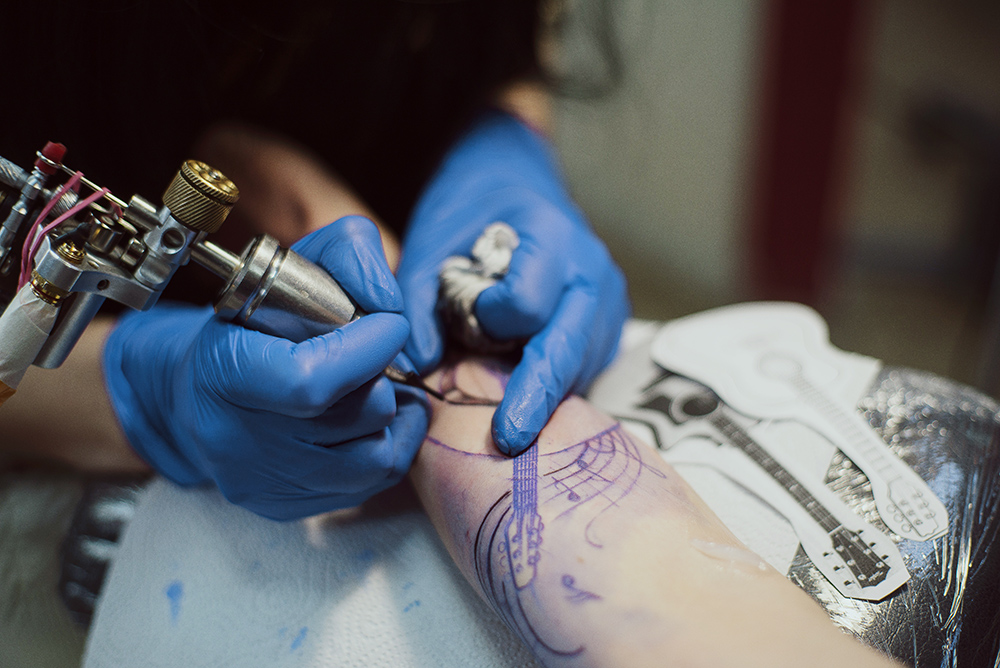A Journey Through the History of Tattooing

Tattoos are more than just ink on skin; they’re timeless artifacts of human expression, individuality, and culture. Whether you’re considering getting your first tattoo or already planning your next masterpiece, understanding the rich history of tattooing adds a whole new depth of meaning to the process.
From ancient rituals to modern artistry, tattoos have evolved from a medium of tradition to an unparalleled expression of personal style. If you're ready to carry on this tradition and make your mark, there's no better time (or artist) to start with than Tim Lease, the best tattoo artist in Orlando, FL. Keep reading as we explore the fascinating history of tattooing and why it remains such an enduring art form.
The Origins of Tattooing
The First Tattoos in History
Believe it or not, tattooing has been part of human culture for thousands of years. The oldest recorded tattoos date back over 5,000 years to Ötzi the Iceman, a well-preserved mummy found in the Alps. His body revealed 61 distinct tattoos made of soot and ash, likely used for medicinal or cultural purposes. These marks highlight how tattoos have been intertwined with human life for millennia.
Similar forms of body art were discovered in ancient Egyptian mummies, mainly on women, suggesting tattoos might have been symbols of fertility or protection during childbirth.
Tattoos in Tribal Cultures
Around the globe, indigenous groups have long used tattooing to signify identity, spirituality, social status, and rites of passage. Polynesian cultures, for example, developed elaborate tattooing techniques that have deeply influenced modern art. The term "tattoo" itself originates from the Polynesian word “tatau,” meaning to strike.
Tribal tattooing techniques were often painful and time-consuming but deeply symbolic. From the intricate facial tattoos of the Māori people of New Zealand (known as tā moko) to the bold geometric patterns of Native American tribes, tattoos served as a way to connect people to their lineage and beliefs.
Tattoos Through the Ages
Ancient Greece and Rome
While tattoos in Greek and Roman societies were more associated with punishment or marking criminals and slaves, they also became a tool for communication. Roman soldiers would tattoo themselves with symbols of loyalty and strength, representing their unique brotherhood.
The Rise of Religious Tattoos in the Middle Ages
During the Middle Ages, tattoos often symbolized religious devotion. Coptic Christians in Egypt and other groups used tattoos as permanent markers of faith.
At this time, tattooing experienced periods of decline in Europe due to the growing influence of the Catholic Church, which viewed the practice as associated with pagan rituals.
Tattoos and Exploration
When European explorers reached the Pacific Islands in the Age of Exploration, they encountered unique tattoo styles that reignited interest in body art back home. By the 18th century, sailors often sported rudimentary tattoos as souvenirs of their travels or badges of their bravery.
Tattooing in Modern History
The Birth of the Tattoo Machine
One of the most significant innovations in tattoo history came in 1891 when Samuel O'Reilly patented the first electric tattoo machine, inspired by an Edison engraving device. This invention revolutionized the industry by making tattoos faster, more precise, and more accessible.
Tattoos and Self-Expression in the 20th Century
The early 20th century saw tattoos become firmly connected with rebellion and counter-culture. They were popular among sailors, bikers, and subculture groups who used ink as symbols of resistance or identity. Icons like Janis Joplin popularized tattoos in the 1960s and 1970s, embedding them into the collective aesthetic of modern freedom and creativity.
Mainstream Acceptance Today
Fast forward to today, and tattooing has become widely accepted and celebrated as a legitimate art form. Celebrities, influencers, and everyday people proudly display intricate works of art on their bodies. Tattoo conventions, social media platforms, and TV shows like Ink Master have turned tattoo artists into household names.
Nowhere is this more evident than in places like Orlando, FL, where the tattooing scene thrives with a blend of traditional and contemporary styles. Artists such as Tim Lease are leading the charge, combining technical expertise with artistic vision to create unforgettable designs.
Why Tattoos Matter in Modern Culture
Tattoos tell stories. They symbolize milestones, beliefs, identities, and emotions. They preserve traditions while pushing the boundaries of self-expression. They transcend time, cultures, and trends, proving to be one of humanity's most personal forms of art.
For many, choosing to get a tattoo is a deeply personal experience. That’s why selecting a skilled tattoo artist who understands your ideas is crucial to ensure your vision comes to life exactly as you imagined.
Creating Your Own Legacy Today
If this exploration of tattoo history has inspired you to incorporate this timeless art form into your life, the next step is choosing the right artist. Whether you’re looking to honor cultural traditions, celebrate a milestone, or express your unique personality, the best tattoo artist in Orlando, FL, Tim Lease, can help you create a masterpiece that stands the test of time.
Tim Lease combines years of experience with an artistic approach to craft bespoke tattoos that reflect your story. From intricate designs to bold, statement-making pieces, his work has earned him a top spot as one of the most sought-after artists in the Orlando tattoo scene.
Your Tattoo Journey Starts Here
Tattooing has come a long way from its ancient roots. Yet, its enduring appeal proves it’s more than just a trend. A tattoo is a permanent piece of art, a symbol of identity, and a legacy that you carry with you every day.
If you’re ready to take this step and want to work with a true professional, contact Tim Lease today to schedule your appointment. Experience why he’s celebrated as the best tattoo artist in Orlando, FL, and start your own story in the vibrant tapestry of tattoo history.